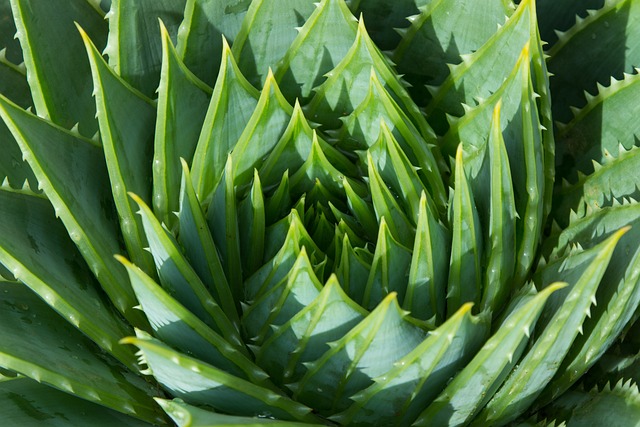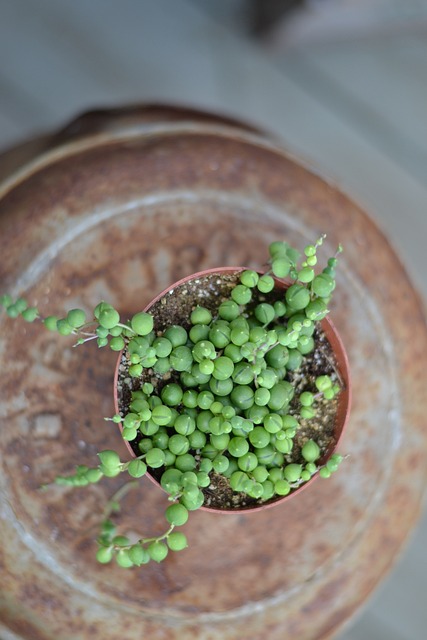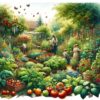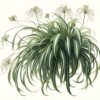The 7 Most Popular Succulents to Grow in Your Garden
All about succulents
Succulent plants have soared in popularity for both indoor and outdoor gardening. These hardy, versatile plants bring beauty and texture to any space. If you’re looking to add some resilient and eye-catching plants to your collection, here are the seven most popular succulents that are perfect for both novice and experienced gardeners.
What is a Succulent?
Succulents are a group of plants that store water in their leaves, stems, or roots, allowing them to thrive in arid climates and soil conditions. This unique adaptation gives their leaves a thick, fleshy appearance. While often associated with cacti, many succulents do not resemble cacti at all, showcasing a wide variety of colors, shapes, and sizes. Succulents are primarily known for their ability to withstand long periods without water, making them exceptionally low-maintenance.
Why are Succulents so Popular?
Succulents are beloved for several reasons:
- Ease of Care: Their low water and maintenance requirements make them ideal for those who want garden beauty without extensive upkeep.
- Versatility: Succulents can grow indoors or outdoors, in ground or containers, making them suitable for any living situation.
- Aesthetic Appeal: With diverse forms and vibrant colors, succulents add a modern touch to home decor and landscapes.
- Durability: They are robust and can survive in conditions that would be challenging for many other plants, making them excellent for novice gardeners.
Master Gardener Tip: Succulents are some of the easiest plants to propagate, and great for a beginning gardener. If you have a friend who has some plants, it can be as easy as nipping a small plant piece, and placing it in a pot. Note: Don’t be the secretive lady at the nursery that is nipping succulents and putting them in her pocket ;).
1. Aloe Vera
A staple in any succulent collection, Aloe Vera is celebrated not just for its sculptural qualities but also for its healing properties. The gel inside its spiky leaves is great for treating skin irritations and burns. It thrives in well-draining soil and bright, indirect sunlight, making it ideal for indoor settings.
2. Echeveria
Echeveria boasts a stunning array of colors and is known for its attractive rosette-shaped foliage. These plants require minimal water and thrive in bright light, making them perfect for sunny windowsills.
3. Jade Plant (Crassula ovata)
The Jade Plant is revered for its lush, tree-like appearance and is often associated with good luck. It’s particularly hardy, needing only a sunny spot and occasional watering when the soil dries out.
4. Zebra Plant (Haworthiopsis fasciata)
With its distinctive striped leaves, the Zebra Plant is perfect for adding texture and interest to your succulent collection. It thrives in bright, indirect light and a slightly more humid environment, which is ideal for bathroom settings.
5. Sempervivum (Hens and Chicks)
Extremely hardy, Sempervivum plants are known for their ability to withstand cold and drought. Commonly called ‘Hens and Chicks’, these plants produce clusters of rosettes that can quickly fill a garden space.
6. String of Pearls (Senecio rowleyanus)
The charming String of Pearls features a cascade of round, bead-like leaves, making it an exceptional choice for hanging baskets. It prefers light shade and infrequent watering, aligning with its minimal care needs.
7. Burro’s Tail (Sedum morganianum)
Ideal for hanging planters, the Burro’s Tail showcases trailing stems with dense, fleshy leaves. This succulent enjoys bright light and requires very little water, embodying the easy-care nature of succulents.
Growing and Caring for Succulents
To ensure your succulents flourish, here are some general tips:
- Light– Most succulents prefer bright, indirect sunlight.
- Water– Allow the soil to dry completely between watering.
- Soil– Opt for well-draining soil specifically formulated for cacti and succulents.
- Potting– Use pots with drainage holes to prevent water from accumulating at the bottom.
Succulent Plant FAQ
1. What are succulents?
Succulents are plants that have adapted to arid climates by storing water in their leaves, stems, or roots. This feature gives them a thick, fleshy appearance, and they can survive in environments where water is scarce.
2. How often should I water my succulents?
Water your succulents only when the soil is completely dry. Typically, this means watering once every two weeks, but this can vary based on the climate and environment. Less water is needed in the winter months.
3. Do succulents need sunlight?
Yes, succulents need sunlight to thrive. Most species prefer bright, indirect sunlight. If indoors, a south-facing window is ideal. Too little light can cause succulents to stretch toward the light source.
4. Can succulents grow indoors?
Absolutely! Many succulents are well-suited to indoor conditions, especially varieties that can thrive in lower light, such as Haworthias and Gasterias. Just make sure they have enough light and are not overwatered.
5. What is the best soil for succulents?
Succulents require well-draining soil to prevent root rot. Use a cactus mix or create your own by mixing potting soil with sand, pumice, or perlite in a 1:1 ratio.
6. Why are my succulent’s leaves turning yellow?
Yellowing leaves can be a sign of overwatering. Check the moisture level in the soil—if it’s wet, allow it to dry out before watering again. Ensure the pot has good drainage and the soil drains properly.
7. How do I propagate succulents?
Succulents can often be propagated from a single leaf. Gently twist a leaf from the stem, let it callous over for a few days, then place it on top of soil until roots appear. You can also propagate succulents from stem cuttings using a similar method.
8. Can succulents survive in cold weather?
While most succulents prefer warm climates, some varieties like Sempervivum (Hens and Chicks) and certain Sedums are cold hardy and can survive freezing temperatures. Generally, it’s best to bring non-hardy succulents indoors during cold weather.
9. How do I know if my succulent is healthy?
Healthy succulents have firm, plump leaves that are evenly colored. Leaves should not be too thin or shriveled (underwatered) or mushy and translucent (overwatered). Check regularly for pests like aphids and mealybugs.
10. What are the common pests that affect succulents, and how can I deal with them?
Common pests include mealybugs, spider mites, and fungus gnats. Isolate affected plants to prevent the spread of pests. You can treat pests naturally with neem oil or insecticidal soap, applying it directly to the pests and affected areas of the plant.
Closing
Succulents offer a combination of beauty, diversity, and simplicity, making them an excellent choice for gardeners at any experience level. Start with these seven popular types and enjoy the unique charm and stress-free care that succulents bring to your home or garden.
Whether you’re just beginning your gardening journey or looking to expand your plant collection, these seven succulents provide the perfect blend of beauty and ease, ensuring a thriving, vibrant garden oasis.













You must be logged in to post a comment.